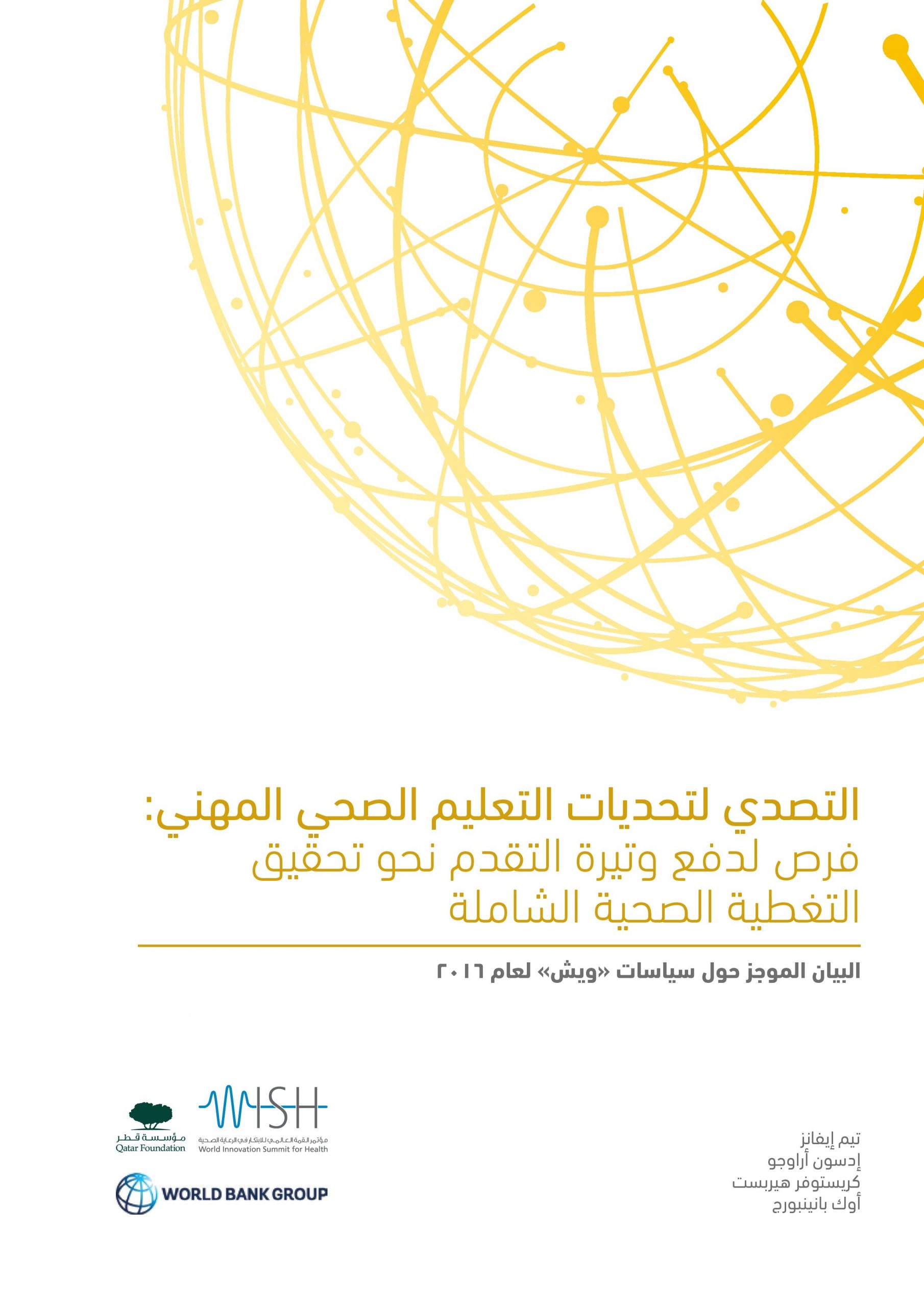ملخص تنفيذي
International efforts to achieve global development goals in health have raised concerns about the availability of a well-trained and effective health workforce. As a result, the health workforce has been the focus of many global initiatives in the last decade that have called for urgent action to overcome the so-called ‘health workforce crisis’. Despite some progress, the health workforce challenges remain a critical bottleneck in achieving UHC goals in most countries.
The current demand shortage of millions of health workers is expected to double in 15 years, with the largest shortages predicted to occur in the regions of East Asia and the Pacific (8.3 million) and South Asia (3.2 million), accentuating the global imbalances in the distribution of health workers. Compared to the health workers’ needs-based projections, the scenario is even more troublesome. In low-income countries (LICs), for example, both the demand for and the supply of health workers are projected to remain significantly below the needs-based threshold. As a result, these countries will likely face shortages of health workers needed to provide basic health services and unemployment of health workers due to the limited capacity to employ the available supply of workers (insufficient demand).
These numbers, while striking in aggregate, fail to reflect individual country contexts, where a range of issues are likely to accentuate the severity of supply shortfalls. These include skews in the skill mix, the tendency for health workers to cluster in urban, more prosperous settings and an absence of workforce planning to meet the growing challenges of chronic diseases or re-emerging infectious diseases. So, despite more than a decade of concerted global action to address the health workforce crisis, collective efforts are falling short, particularly in scaling-up the numbers of health workers needed.
The UHC agenda, with the underlying goal that everyone should have access to the quality health services they need, without financial compromise, brings attention to three universal needs of all health systems. These are related to financing, services and populations. In the absence of UHC, high-cost, high-end services for those who can pay skew the supply of health workers from population health needs by attracting better educated and well-off students towards high-end professional training in tertiary care hospitals with better pay and working conditions. UHC can help to redress the acknowledged skews in health systems towards institutional medical care by, for example, giving greater priority to frontline services provided by community health workers (CHWs) or to pandemic preparedness.
Universal health coverage offers a compelling opportunity to better align the demand for health services and the demand for health workers with population health needs. However, the alignment of demand and need around UHC must find a tangible link to the supply of health workers. As the experience of many countries that have undertaken reforms towards UHC reveals, chronic shortfalls and imbalances in the health workforce continue to hamper progress. Furthermore, these challenges in high-income countries drive a global health worker labor market whereby a large number of skilled health professionals emigrate from lower- to high-income countries, thereby adding to the challenge of managing the supply of health workers in lower-income countries.
Amid the challenges and opportunities represented by the global consensus around UHC, this report aims to stimulate the global debate and catalyze bold ideas on how investments in the education of health workers can help accelerate progress towards UHC. The report acknowledges the positive, demand-side influences that arise from the adoption of reforms of health systems towards UHC and argues their need to be extended to inform a renewal of investments in health worker education. Four entry points along the life course of health workers are put forward as critical education investment areas: target the next generation of health workers through active, progressive, competitive and fair recruitment; reform the scale, scope and value for money of pre-service education institutions; create continuous education opportunities as a more valued driver of career advancement; and reform the authorizing environment through national, regional and international regulatory reforms.
Implementation of these reforms will benefit from a concerted focus on three cross-cutting fronts that transcend the traditional sector divides of health–education: leadership, financing and evidence. The interdependence of investment in health and education, and in the public and private sectors, represents an important interface that will benefit from continued focus, perhaps as part of a future discussion at the World Innovation Summit on Education (WISE).

